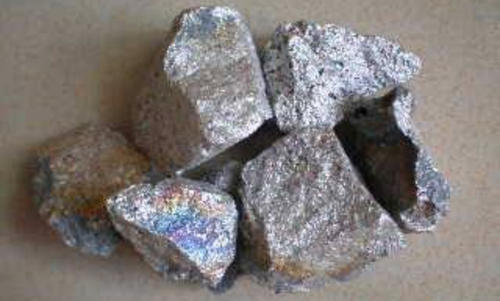Ferromolybdenum – Iran Ferro Molybdenum – FeMo
Ferro Molybdenum is a kind of Ferroalloy which is making by integration of iron and Molybdenum. Molybdenum in stainless steels prevents of corrosion and when mixed with iron, would be changes to austenite. Ferro-Molybdenum is available in many grades, but predominantly it is produced in just two grades (US and EU) where the content of the Molybdenum grade is between 60% and 75%.
Iran Ferro molybdenum is almost known as most competitive FeMo around the world in price term. It’s because of locating natural copper ores in Iran as well as Government subsidies for their crude material like molybdenum oxide. Also, unlike the globe, there is very cheap energy in compare with other countries takes down the Iranian FeMo price as well as Iranian Ferrosilicon price.

PROPERTIES OF FERRO MOLYBDENUM
Ferro-Molybdenum is kind of alloys to the melting process of amorphous metals and has high potential properties into the new alloy. One of the primary benefits of adding FerroMolybdenum to an alloy is its hardening features that makes steel extremely strong and at the same time weldable, as its melting-point. Additionally, the adding of FerroMolybdenum to an alloy can increase corrosion resistance. Due to FerroMolybdenum properties, it is suitable for a variety of protective films over other metals.

PRODUCTION OF FERRO MOLYBDENUM
A huge amount of the global Ferromolybdenum supply is manufactured in the USA, Russia, China, and Chile. Same as the most kind of ferroalloys , the most basic of the Ferro-Molybdenum production process would be that the Molybdenum is first mined and then transformed into Molybdenum (VI) Oxide MoO3. That oxide is mixed with iron oxide and aluminum and then reduced in an aluminothermy reaction. After melting the electron-beam and purifies the Ferro-Molybdenum, the product will be ready to packaged. Typically the resulting size will be produced as either small briquettes or as a finer powder. FerroMolybdenum is usually supplied in either bags or steel drums for shipping.
USES OF FERRO MOLYBDENUM
The largest practical usage of Ferromolybdenum are in ferroalloys, and depending on the molybdenum purity range, it is useful for machine tools and equipment, refinery tubing, military hardware, load-bearing parts and rotary drills. Ferromolybdenum is also used in cars, locomotives, trucks and ships.
USES OF FERRO MOLYBDENUM
Tool steels, with a high percentage range of Ferromolybdenum, are used in high-speed machining parts, cold work tools, drill bits-screwdrivers, dies, chisels, heavy castings, ball and rolling mills, rolls, cylinder blocks, piston rings and large drill bits. In addition, Ferro-Molybdenum is used in stainless and heat-resisting steels that are employed by synthetic fuel and chemical plants, heat exchangers, power generators, oil-refining equipment, pumps-turbine tubing-ship propellers, plastics and inside acid storage containers.

FERRO MOLYBDENUM MARKET
The price of Ferromolybdenum saw a major upturn since the start of WWII. Here are some Factors Affecting FeMo Price Trends:
Molybdenum Prices: Since molybdenum is the key component (typically 60-75% in FeMo), its market trends directly impact FeMo costs.
Steel Industry Demand: FeMo is used in alloy steel, stainless steel, and tool steel production. Strong demand from construction, automotive, and machinery sectors can drive prices up.
Supply Chain & Production: Disruptions in mining (e.g., in China, Chile, Iran or the U.S.) or export restrictions can affect availability.
Global Trade Policies: Tariffs, sanctions (e.g., affecting Russian and Iranian molybdenum), and trade agreements play a role as well as Economic Conditions


